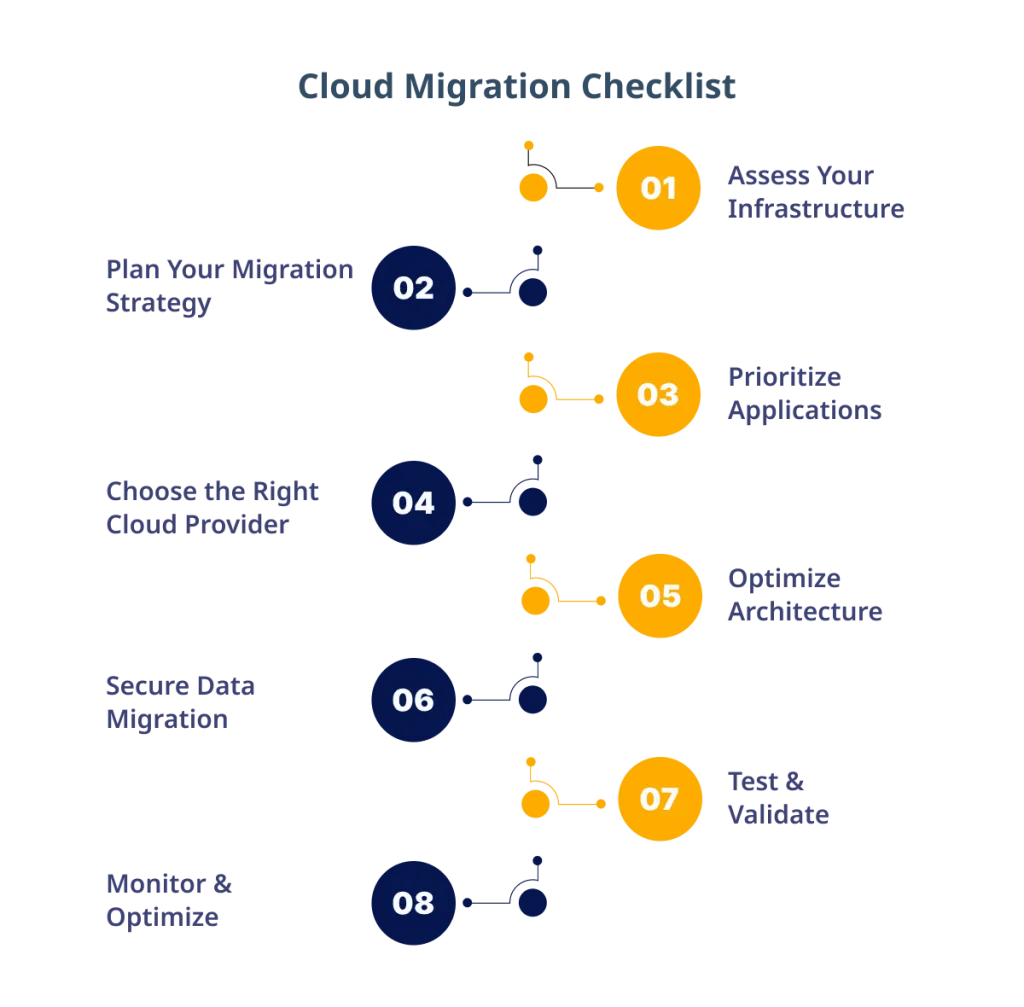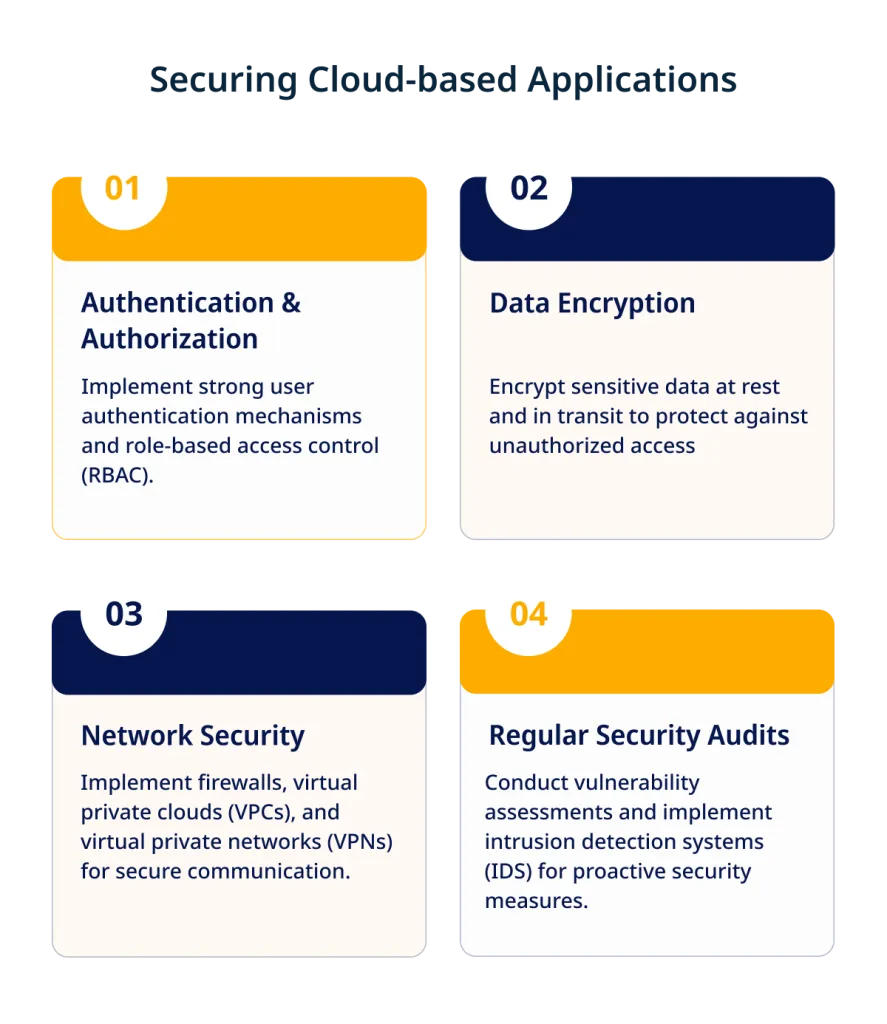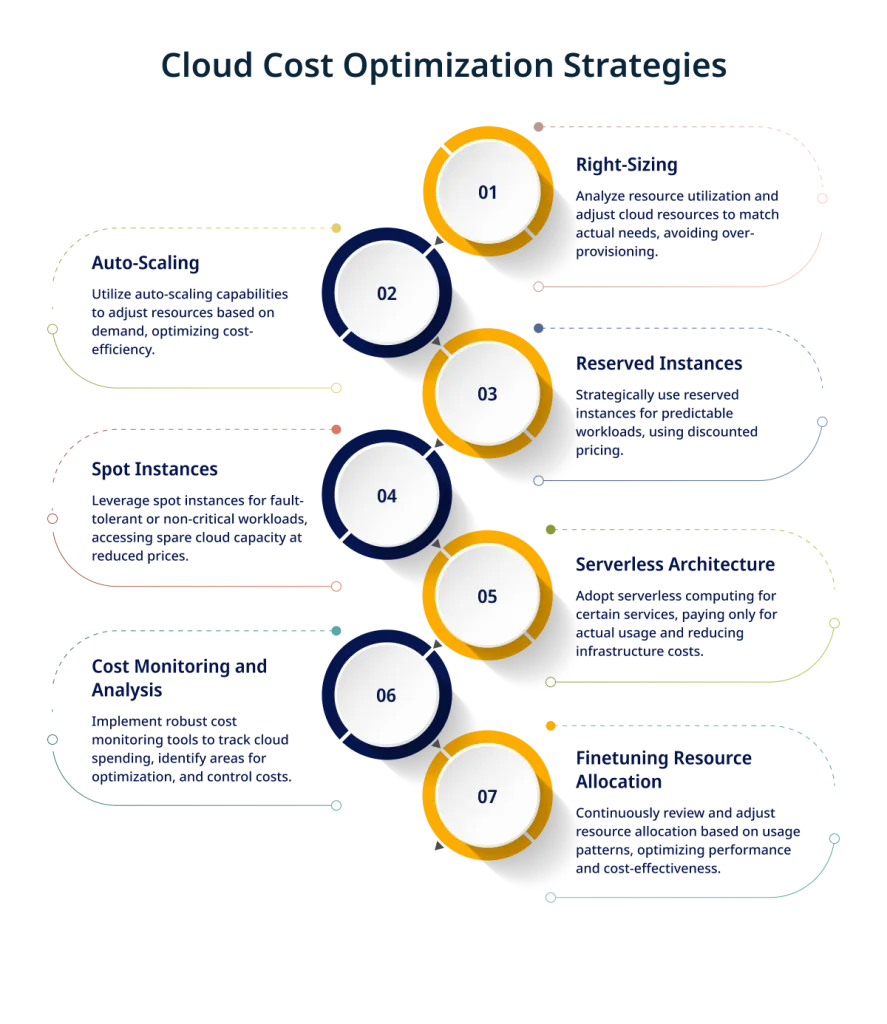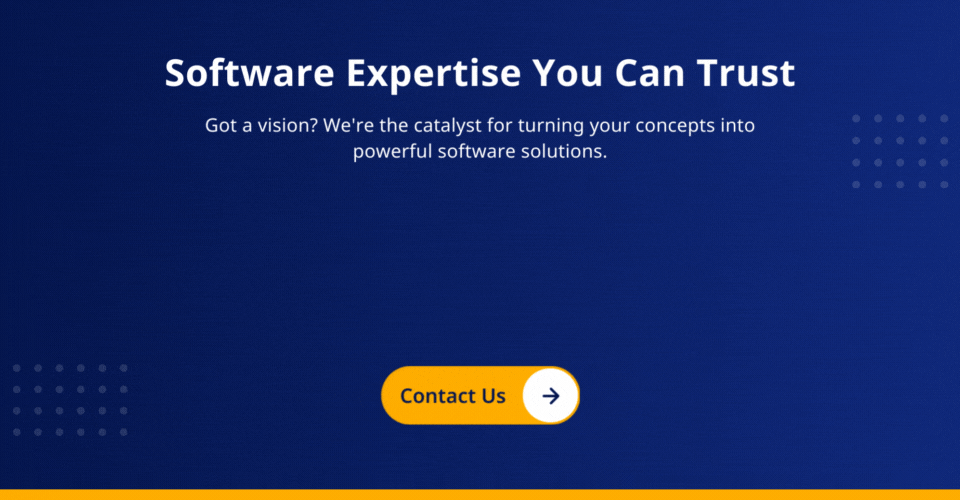Cloud-based applications have been at the forefront of modern businesses and are rapidly gaining popularity for their scalability and security.
According to Markets and Markets, the global cloud computing market is projected to reach $1,240.9 billion by 2027 and it is expected to grow at a compound annual growth rate (CAGR) of 17.9%.
Application development companies always look for best practices for building secure and scalable cloud-based applications.
This blog post will discuss the best practices that will help your application development company build secure and scalable cloud-based applications.
Why Consider Cloud Computing for Business?
Cloud computing has revolutionized how businesses operate by offering a myriad of unattainable advantages. Its significance cannot be overstated, as it has become a cornerstone of modern business infrastructure.
Businesses should strongly consider adopting cloud computing due to the numerous benefits:
Reason #1: Cost Efficiency
Cloud computing eliminates the need for businesses to invest in expensive hardware and infrastructure. By opting for cloud services, businesses can save significant capital expenditure and instead pay for the services they use on a subscription or pay-as-you-go basis.
Reason #2: Scalability & Flexibility
The cloud allows businesses to scale their resources up or down according to their needs. This scalability allows businesses to adapt to fluctuating demands and always have the required computing power and storage capacity.
Reason #3: Enhanced Collaboration
Cloud-based collaboration tools enable teams to work together seamlessly, regardless of their location. Employees can collaborate in real-time, share documents, and communicate efficiently, fostering productivity and teamwork.
Also Read: Cloud Computing in Manufacturing: Solutions to Stay on Top
Reason #4: Improved Accessibility
Cloud computing enables businesses to access their data and applications from anywhere, anytime, as long as there is an internet connection. This accessibility empowers remote work, enabling employees to be productive even when not physically present.
Reason #5: Data Security and Disaster Recovery
Cloud providers invest heavily in advanced security measures to protect sensitive data. They employ encryption, regular backups, and redundancy measures to ensure data is protected and can be quickly recovered in case of a disaster. One of the best examples of this is cloud computing in healthcare through which doctors keep their patient’s data safe while ensuring a quality treatment.
Reason #6: Innovation and Competitive Advantage
Cloud computing allows businesses to rapidly adopt and integrate new technologies and services. It allows quick experimentation and innovation, giving businesses a competitive edge in the digital landscape.
Discover the best practices for optimizing your cloud-based applications.
Best Practices For Building Scalable & Secure Cloud-based Applications
Building scalable and secure cloud-based applications is necessary for modern businesses that depend on cloud application development services. Such applications require specific architecture, data management, security, and DevOps automation considerations to ensure scalability and security.
Let’s explore some useful practices to ensure the success of your application.
1. Designing for Scalability: Ensuring Seamless Growth
Designing for scalability is crucial to building successful applications that can handle growing user demands without compromising performance.
Scalability ensures that the applications can seamlessly accommodate the increased load as businesses expand and user bases increase.
Here are key considerations for designing scalable applications:
- Distributed Architectures: Designing applications with distributed architectures allows workload distribution across multiple servers, enabling horizontal scaling. By breaking down the application into smaller, interconnected components, it becomes easier to scale each component independently as needed.
- Load Balancing: Implementing load balancing techniques helps evenly distribute incoming traffic across multiple servers, preventing any single server from becoming overloaded. This ensures optimal utilization of resources and eliminates potential bottlenecks, improving overall performance and user experience.
- Auto-Scaling: Leveraging auto-scaling capabilities allows applications to automatically adjust resources based on demand. The application can dynamically scale up or down by setting up predefined scaling policies and monitoring metrics such as CPU utilization or network traffic, ensuring sufficient resources are always available.
- Caching Mechanisms: Implementing caching mechanisms, such as in-memory caching or content delivery networks (CDNs), can significantly improve application performance. Caching frequently accessed data or static content reduces the load on backend servers, resulting in faster response times and better scalability.
- Stateless Design: Designing stateless components eliminates the need for servers to maintain session-specific data. Instead, session data is stored externally, allowing requests to be processed by any available server. This facilitates easier scaling, as servers can be added or removed without impacting user sessions.
Check out this blog: Cloud Computing: How Will It Shape The Future Of The Healthcare Industry?
Case Study: Netflix – Scalability for Uninterrupted Streaming
The concept of scalability has been successfully applied for smooth growth by the renowned streaming service Netflix.
Netflix needed a scalable infrastructure to accommodate rising demand and assure uninterrupted streaming experiences because it has millions of customers and a massive library of content.
Netflix has managed the exponential increase in users and data while providing high-quality streaming experiences because of its scalable architecture and cloud-based infrastructure.
They have established a standard for other companies in the media and entertainment sector with their success in planning for scalability.
Harness the potential of scalable cloud solutions.
2. Ensuring Security in the Cloud: Protecting Data and Applications
Ensuring security in the cloud is paramount to protect sensitive data and maintain the integrity of applications.
Here are vital considerations to safeguard data and applications in the cloud:
- Authentication and Authorization: Implement robust authentication mechanisms, such as multi-factor authentication (MFA), to verify user identities. Use role-based access control (RBAC) to grant appropriate access privileges based on user roles.
- Data Encryption: Encrypt sensitive data both at rest and in transit to prevent unauthorized access. Utilize encryption protocols, such as SSL/TLS, to secure data during transmission. Employ encryption technologies like AES or RSA for data at rest.
- Secure Access Controls: Implement stringent access controls, such as least privilege principles, to limit access to sensitive resources. Regularly review and update access policies to ensure authorized access.
- Regular Security Audits: Conduct security audits and vulnerability assessments to identify and address potential weaknesses. Penetration testing can help simulate attacks and identify vulnerabilities before they are exploited.
- Intrusion Detection & Monitoring: Implement intrusion detection systems (IDS) and robust logging mechanisms to monitor and detect suspicious activities. Continuously monitor system logs and network traffic to identify potential security breaches.
- Disaster Recovery and Backup: Maintain regular backups of critical data and establish disaster recovery plans. Test and verify the restoration process periodically to ensure data can be recovered during a breach or system failure.
- Cloud Provider Security Measures: Understand the security measures the cloud service provider implements. Evaluate their compliance certifications, data center security, and incident response procedures to ensure they align with your security requirements.
Don’t miss this blog! Top 20 Cloud Services Companies For Enterprises
Case Study: Capital One – Cloud Security Breach Mitigation
Capital One, a leading financial institution, experienced a significant cloud security breach in 2019.
The company immediately mitigated the breach, including prompt response, vulnerability identification, enhanced access controls, encryption and data protection, security audits, and staff training.
They notified law enforcement and collaborated with authorities to investigate the incident, strengthened access controls, and implemented robust encryption mechanisms.
Capital One also implemented security audits and monitored systems, including intrusion detection and SIEM solutions. The incident highlighted the importance of continuous vigilance and proactive security practices in the cloud.
3. Optimizing Performance: Strategies for Efficiency and Speed
Optimizing performance is crucial for cloud-based applications to deliver a seamless user experience. You can hire app developers to ensure the efficient implementation of the strategies. Here are several strategies for improving efficiency and speed include:
- Caching mechanisms can significantly reduce the response time for data retrieval by storing frequently accessed data in a cache.
- CDNs, on the other hand, improve latency by distributing data across multiple geographically dispersed servers, reducing the distance data needs to travel to reach the user.
- Optimizing database design and query performance involves proper indexing, partitioning, and optimizing queries for better performance.
- Leveraging cloud-native services such as AWS Lambda, S3, and CloudFront can enhance performance by allowing the application to scale rapidly and provide faster access to data.
Case Study: Google – Performance Optimization for Search Engine
Google, the leading search engine, showcases exemplary performance optimization strategies to ensure efficient and speedy search experiences for billions of users worldwide.
By implementing these performance optimization strategies, Google has achieved unparalleled efficiency and speed in search results delivery.
Their commitment to optimizing database infrastructure, resource utilization, network efficiency, and caching mechanisms has contributed to their position as a market leader in the search engine industry.
Discover the secrets to building high-performing cloud applications.
4. Leveraging DevOps Practices: Automation and Collaboration
As cloud-based applications dominate the digital landscape, leveraging DevOps practices becomes increasingly crucial for organizations seeking scalability and security. Automation and collaboration are key in streamlining application delivery and ensuring the highest quality for cloud-based applications.
Integrating continuous integration and continuous deployment (CI/CD) pipelines allows for the seamless integration of new features and updates, ensuring a faster time to market. Organizations can reduce manual errors and improve efficiency by automating the build, test, and deployment processes.
Automated testing and monitoring further enhance the quality assurance process for cloud-based applications. By continuously monitoring the performance and functionality of the application, organizations can proactively identify and resolve any issues, ensuring a seamless user experience.
Collaboration between development and operations teams is essential for successful cloud-based application development. By fostering a culture of collaboration, organizations can promote cross-functional communication, allowing for better coordination and alignment of goals.
This collaboration also helps ensure that security and scalability considerations are built into the development process. A cloud app development company is all you need to successfully leverage DevOps practices for your application.
Case Study: Amazon – DevOps for Continuous Delivery
Amazon, the global e-commerce giant, exemplifies the successful implementation of DevOps practices, specifically automation, and collaboration, to continuously deliver their services.
By implementing DevOps practices, Amazon achieved continuous delivery of its services, enabling them to rapidly innovate, respond to customer needs, and maintain high-quality customer experiences.
Their success is a real-world example of the transformative impact of automation and collaboration on efficiently delivering software products and services.
Also read this blog: Best DevOps Companies In India
5. Cost Optimization: Managing Cloud Resources Efficiently
Cost optimization is a crucial aspect of managing cloud resources efficiently, allowing businesses to maximize the value of their investments while ensuring optimal performance.
By implementing smart cost optimization strategies, companies can achieve significant savings without sacrificing functionality or user experience. Here are key practices for managing cloud resources efficiently and optimizing costs:
- Right-sizing: Analyze resource utilization and adjust cloud resources to match actual needs, avoiding overprovisioning and reducing unnecessary expenses.
- Auto-scaling: Utilize auto-scaling capabilities to automatically adjust resources based on demand, scaling up during peak periods and down during low usage, optimizing cost-efficiency.
- Reserved Instances: Strategically utilize reserved instances for predictable workloads, using discounted pricing with long-term commitments.
- Spot Instances: Utilize spot instances for fault-tolerant or non-critical workloads, leveraging spare cloud capacity at significantly reduced prices.
- Serverless Architecture: Embrace serverless computing for certain services, eliminating the need for provisioning and managing dedicated servers and paying only for actual usage.
- Cost Monitoring and Analysis: Implement robust cost monitoring tools to track cloud spending, analyze cost reports, and identify areas for optimization.
- Finetuning Resource Allocation: Continuously review and adjust resource allocation based on usage patterns, optimizing performance and cost-effectiveness.
Case Study: Airbnb – Efficient Cloud Resource Management
Airbnb, the popular online marketplace for vacation rentals, demonstrates effective cost optimization strategies in managing cloud resources.
By implementing these cost optimization strategies, Airbnb has been able to effectively manage its cloud resources and achieve significant cost savings.
Their focus on right-sizing, auto-scaling, reserved instances, spot instances, serverless architecture, and cost monitoring demonstrates their commitment to efficiently managing cloud resources while delivering a seamless booking experience to their users.
Learn how to scale & Secure your applications
Conclusion
Cloud-based apps are now more crucial than ever because of their scalability, security, and cost-effectiveness. Building scalable and secure cloud-based apps is a difficult process that requires knowledge and experience.
Following best practices for cloud application development services can substantially expedite the process to get the desired results.
Some of the best practices we discussed include designing for scalability, ensuring cloud security, boosting performance, and using DevOps.
These best practices can assist developers in producing cloud-based applications that are as safe, scalable, and efficient.








